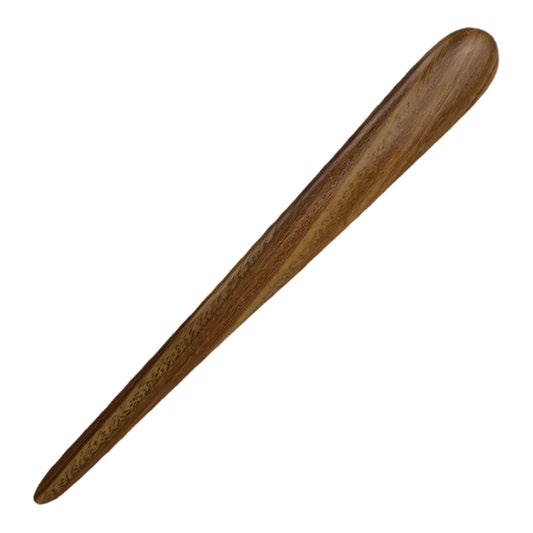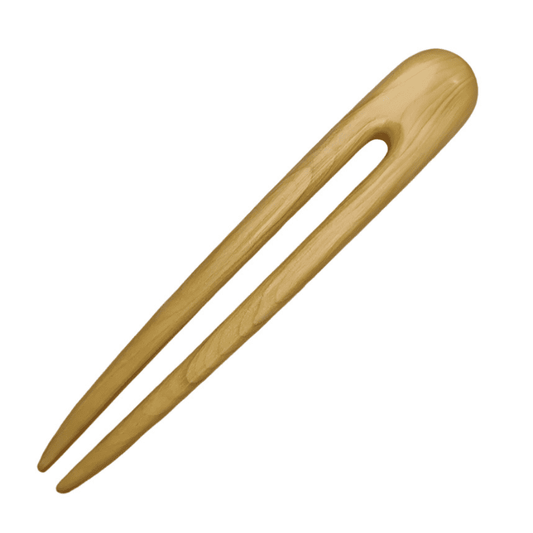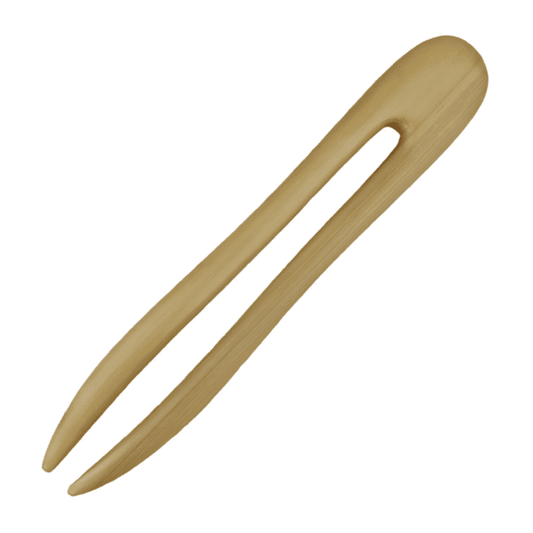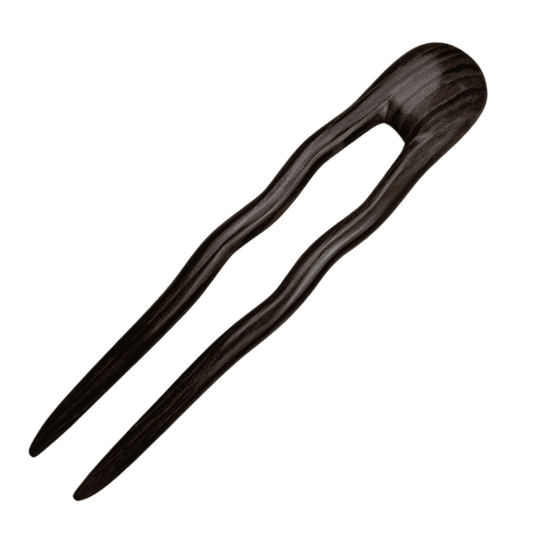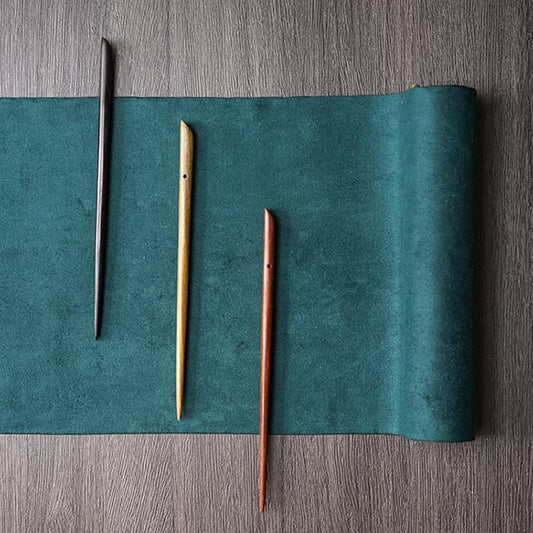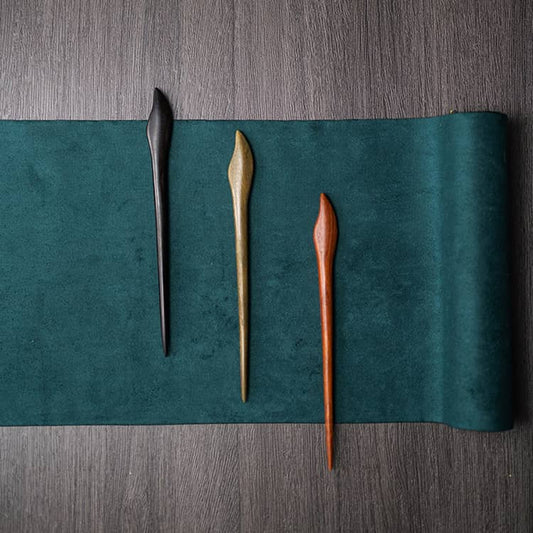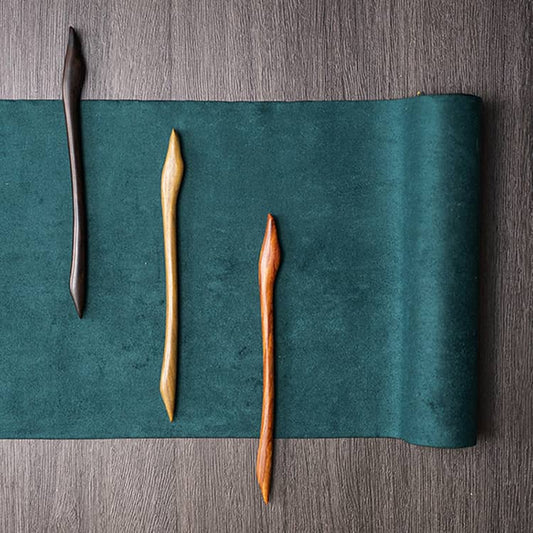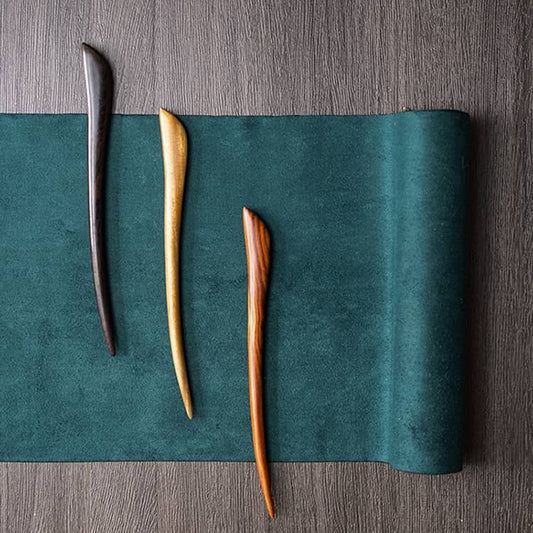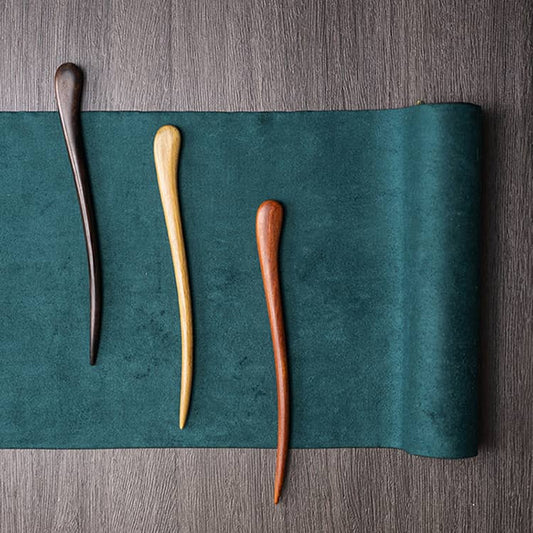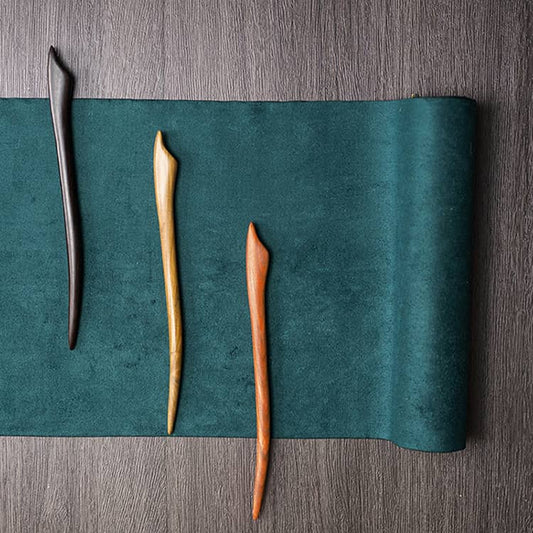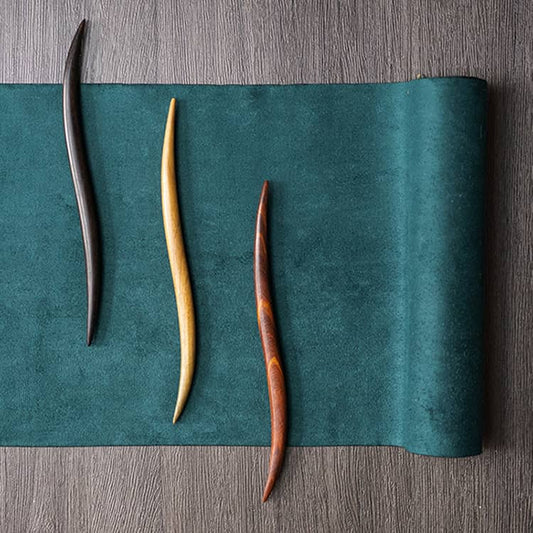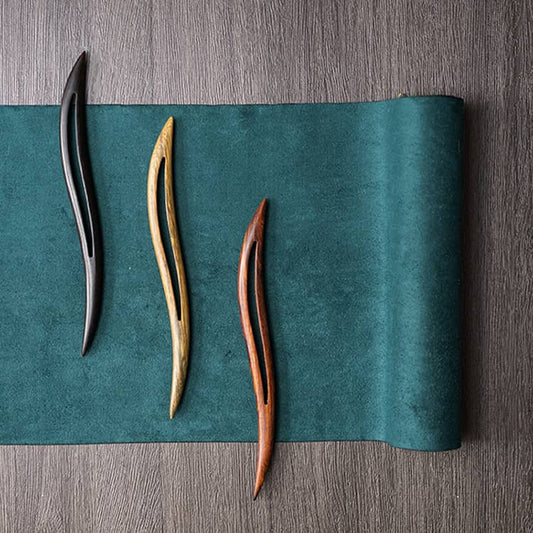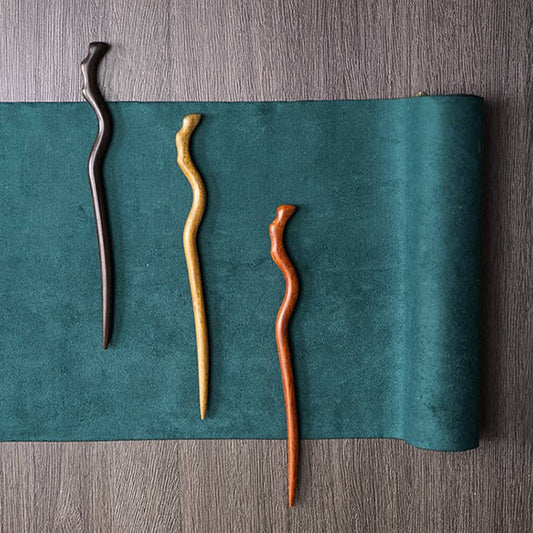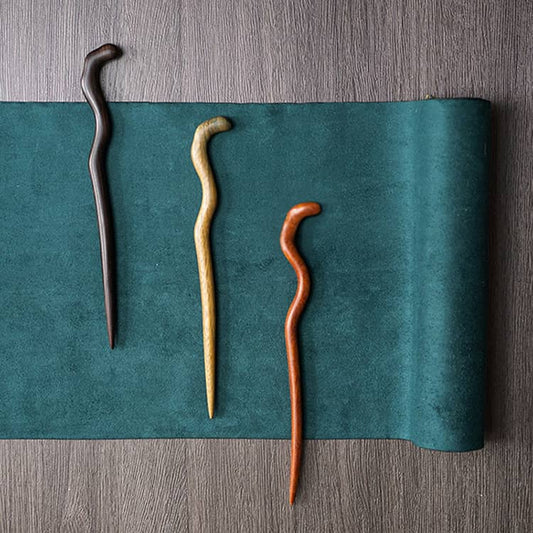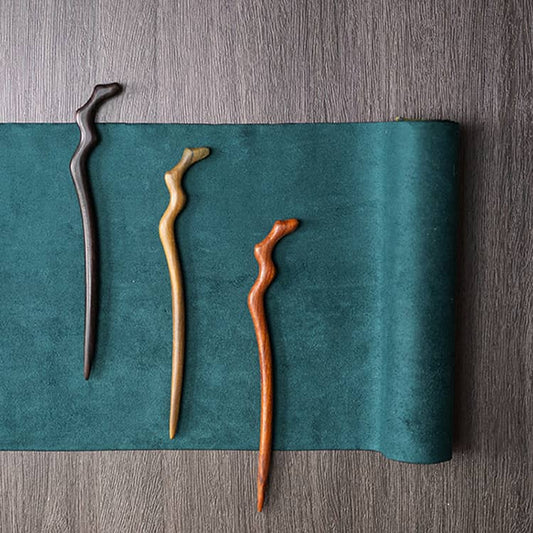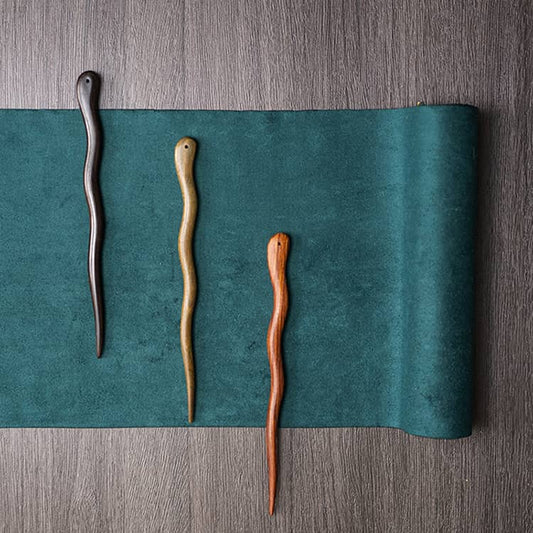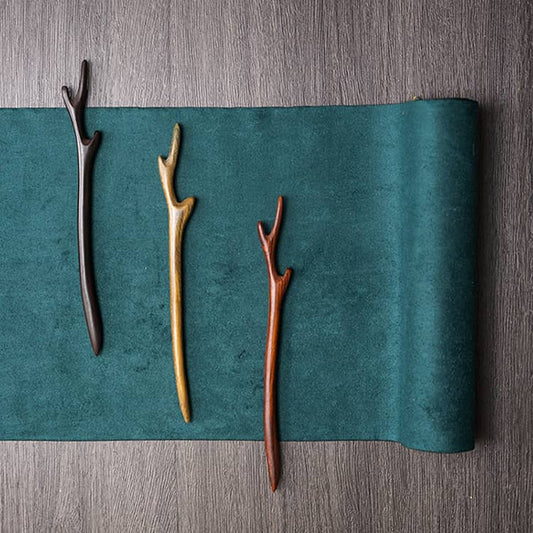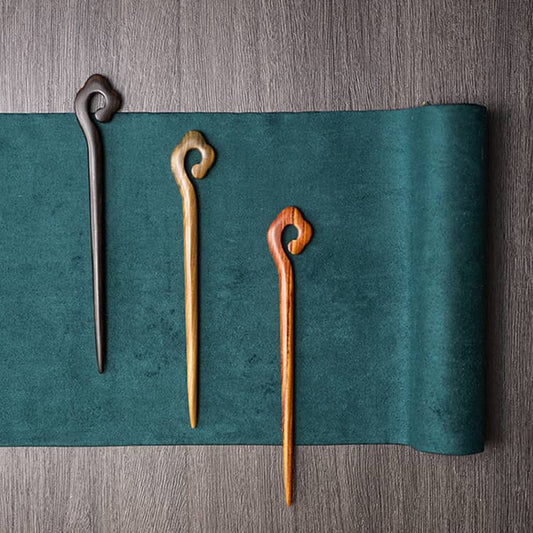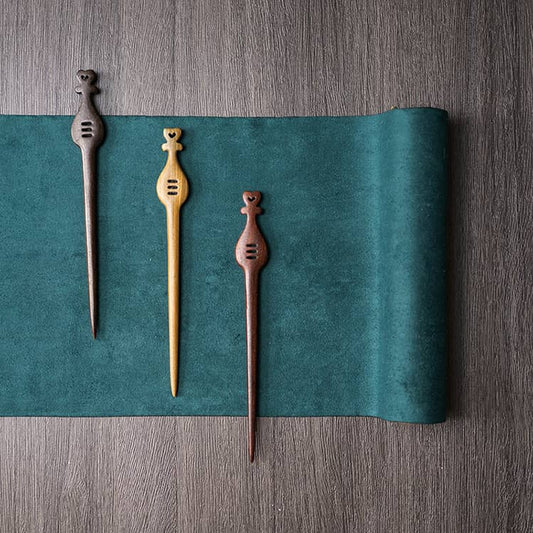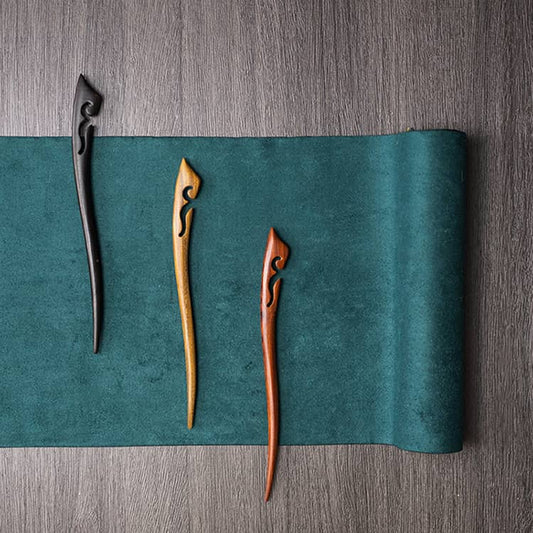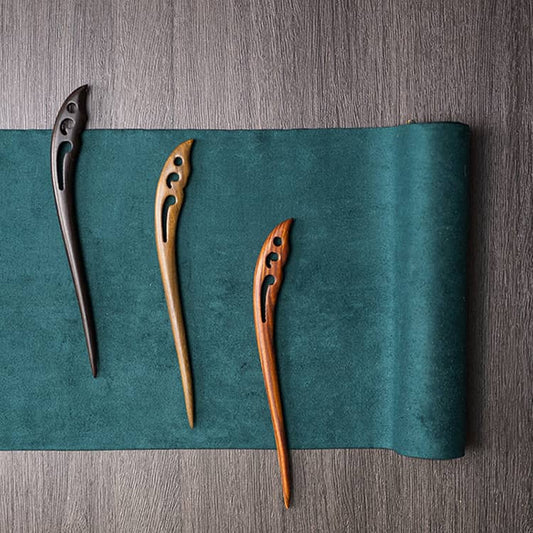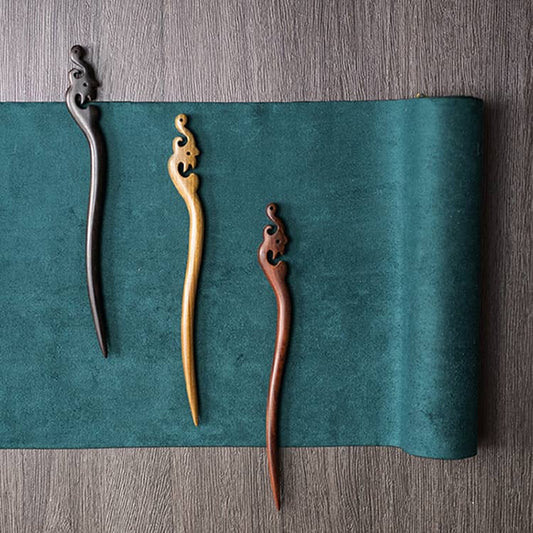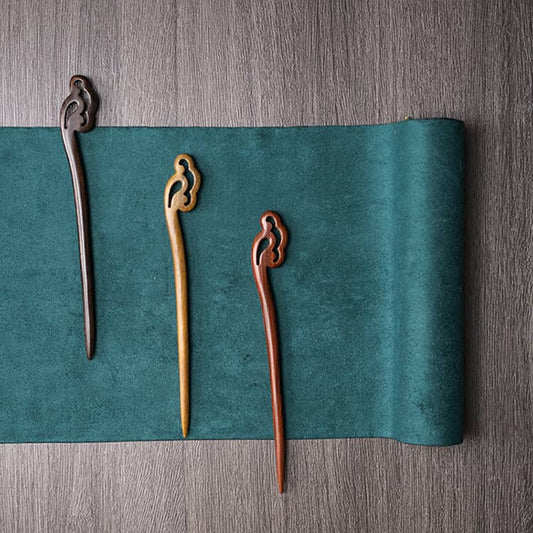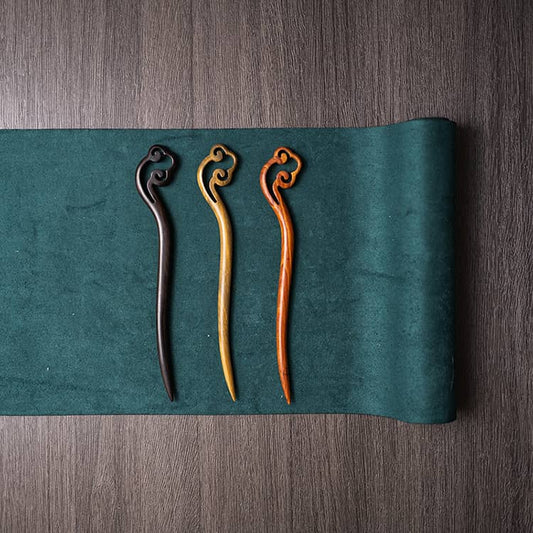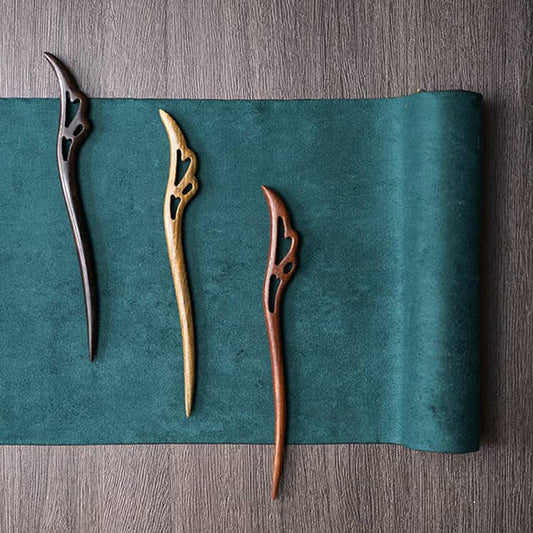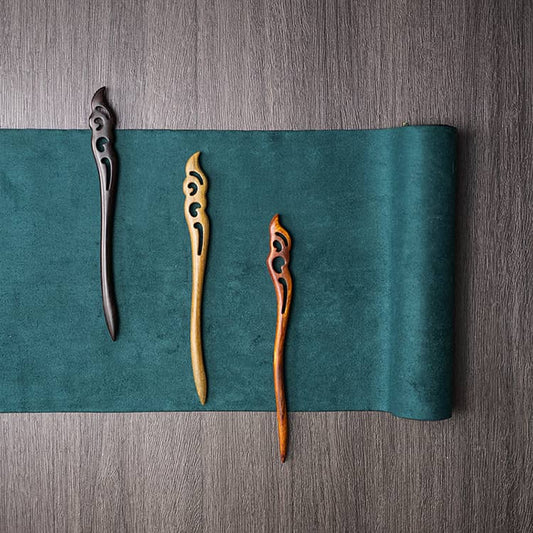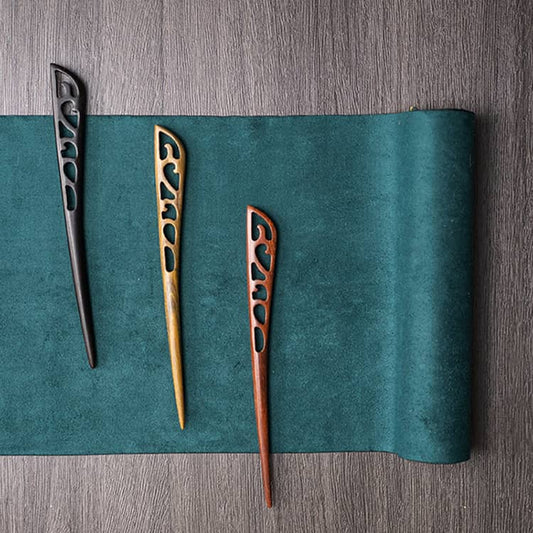Collection: Hairpin
Chinese hairpin or hair stick, called zan(簪), ji(笄) or chai(钗) in Chinese, played a very important role in ancient Han Chinese people's life. In traditional Chinese culture, hair was considered as a part of the body that comes from one's parents. One should treat his hair seriously, and adult Han Chinese can't cut their hair casually, so both men and women use hairpins to hold their long hair in place. Women's hairpin style even represent their social rank.
Ancient Han Chinese young girls start to use hairpins to style their hair as buns when they were 15, at the coming of age ceremony called Ji li(笄礼). After that, they were considered as young women and eligible for marriage. When engaged to be married, Han Chinese young women would give her hairpin to her fiance. And after the wedding, the husband would place the hairpin back in the wife's hair. If the couple had to get separated, the wife would split her chai(a type of hairpin which has two sticks) in half, and each of the couple would keep one half until they were reunited.
After the establishment of Qing Dynasty, Han Chinese men were forced to follow Manchu hairstyle and clothing by the "Tifayifu(剃发易服)" edict policy. So men stop using hairpin after that, and women can still wore the Han-style hairstyle.
Chinese hairpin can be made by bone, stone, pottery, shell, horn, bamboo, wood, jade, ivory, copper, silver and gold. The end of hairpins usually decorated with flowers, dragons and phoenixes. There are many types of Chinese hairpin, such as zan, ji, chai, bu yao.

-
Zan Hairpin
Regular price From $8.88Regular priceUnit price / per -
Chai Hairpin
Regular price From $12.88Regular priceUnit price / per -
U-shaped Chai Hairpin
Regular price From $12.88Regular priceUnit price / per -
Wavy Chai Hairpin
Regular price From $16.88Regular priceUnit price / per -
18cm Sandalwood Chinese Hairpin Zan (Shape 1)
Regular price $8.88Regular priceUnit price / per -
18cm Sandalwood Chinese Hairpin Zan (Shape 2)
Regular price $10.88Regular priceUnit price / per -
18cm Sandalwood Chinese Hairpin Zan (Shape 3)
Regular price $10.88Regular priceUnit price / per -
18cm Sandalwood Chinese Hairpin Zan (Shape 4)
Regular price $10.88Regular priceUnit price / per -
18cm Sandalwood Chinese Hairpin Zan (Shape 5)
Regular price $10.88Regular priceUnit price / per -
18cm Sandalwood Chinese Hairpin Zan (Shape 6)
Regular price $10.88Regular priceUnit price / per -
18cm Sandalwood Chinese Hairpin Zan (Shape 7)
Regular price $10.88Regular priceUnit price / per -
18cm Sandalwood Chinese Hairpin Zan (Shape 8)
Regular price $12.88Regular priceUnit price / per -
18cm Sandalwood Chinese Hairpin Zan (Shape 9)
Regular price $12.88Regular priceUnit price / per -
18cm Sandalwood Chinese Hairpin Zan (Shape 10)
Regular price $12.88Regular priceUnit price / per -
18cm Sandalwood Chinese Hairpin Zan (Shape 11)
Regular price $12.88Regular priceUnit price / per -
18cm Sandalwood Chinese Hairpin Zan (Shape 12)
Regular price $12.88Regular priceUnit price / per -
18cm Sandalwood Chinese Hairpin Zan (Shape 13)
Regular price $12.88Regular priceUnit price / per -
18cm Sandalwood Chinese Hairpin Zan (Shape 14)
Regular price $12.88Regular priceUnit price / per -
18cm Sandalwood Chinese Hairpin Zan (Shape 15)
Regular price $12.88Regular priceUnit price / per -
18cm Sandalwood Chinese Hairpin Zan (Shape 16)
Regular price $12.88Regular priceUnit price / per -
18cm Sandalwood Chinese Hairpin Zan (Shape 17)
Regular price $12.88Regular priceUnit price / per -
18cm Sandalwood Chinese Hairpin Zan (Shape 18)
Regular price $12.88Regular priceUnit price / per -
18cm Sandalwood Chinese Hairpin Zan (Shape 19)
Regular price $12.88Regular priceUnit price / per -
18cm Sandalwood Chinese Hairpin Zan (Shape 20)
Regular price $12.88Regular priceUnit price / per -
18cm Sandalwood Chinese Hairpin Zan (Shape 21)
Regular price $12.88Regular priceUnit price / per -
18cm Sandalwood Chinese Hairpin Zan (Shape 22)
Regular price $12.88Regular priceUnit price / per -
18cm Sandalwood Chinese Hairpin Zan (Shape 23)
Regular price $12.88Regular priceUnit price / per
